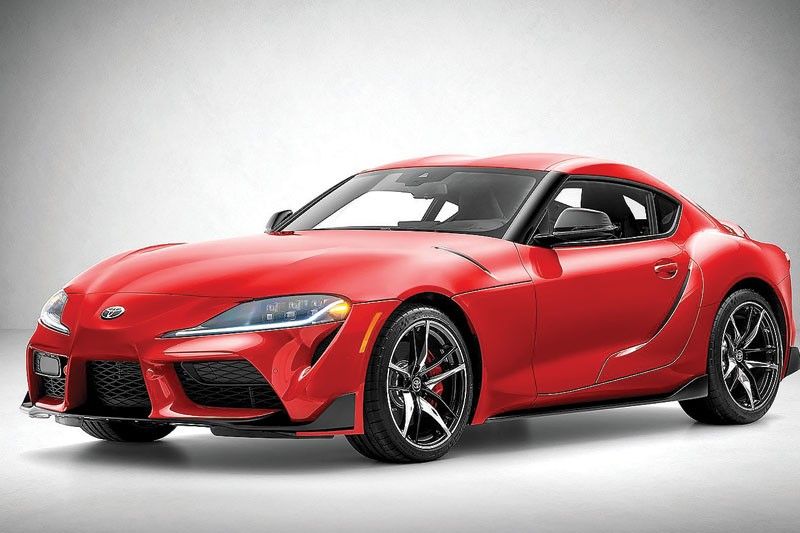I’m not convinced by the 2020 Toyota Supra

At the North American International Auto Show in Detroit, the world gets an all-new Toyota Supra. Yay. Hurray. Nothing to see here, so move along. After countless concept cars (the first one in 2012), teases, spy shots, unintentional reveals, and all—the end result is pretty underwhelming. Sure, some of us will get a kick out of the 1990s nostalgia, but that’s all the all-new Supra really is: nostalgia. It’s the Japanese New Beetle, honestly.
I’ve wanted to accept the first all-new Supra, I honestly did; but I just can’t. Toyota says that the all-new model—the A90 embodies their rich racing heritage; of how the double-bubble roof recalls the 2000 GT and that the face is reminiscent of the fourth-generation Supra Turbo. While I have no issue with Toyota bringing up the Supra’s ancestors, I could also readily point out that it looks like a mess. A hot mess it may be, but a mess nonetheless. Toyota calls it “functional by design,” the closest thing we get to an admittance that it’s ugly.
Then, you get to the part where Toyota starts describing the Supra’s performance—that it was tested personally by “Master Driver” and Toyota President extraordinaire Akio Toyoda on the punishing Nürburgring Nordschleife racetrack in Germany to “ensure it exceeds the expectations of Supra fans across the globe.” Honestly, this shouldn’t be a hard feat to achieve given the last time Toyota sold a Supra was 17 years ago—the operating system of choice was Windows XP and the Iomega Zip Drive was still around. The biggest offense of this development is that Toyota needed BMW’s help to achieve all this.
Yes, Supra fanatics will defend Toyota’s decision to do a collaboration with the fact that the sportscar market is gradually shrinking, and that the 2020 Supra has its own unique tuning compared to its BMW Z4 mechanical twin, but the attributes Toyota was mentioning—50/50 front-to-back weight distribution, low center of gravity, neutral cornering balance—those are attributes are more BMW than Toyota. This isn’t a “fun-to-drive Toyota” in the purest sense. If you want one of those, look at the Lexus RC F Track Edition.
The Supra actually rides on BMW’s CLAR or Cluster Architecture platform which underpins pretty much every current BMW. Basing everything on numbers, the BMW Z4 and the Supra share the same hardpoints—both have identical front and rear tracks, and both have the same wheelbase; even the suspension is the same on both cars.
And let’s get to the engine: it’s by BMW. For the North American market, the Supra comes with a 3.0-liter inline-6 (B58B30) pushing out 340hp and 500Nm of torque thanks to a twin-scroll turbocharger, direct-injection tech, and variable timing on both intake and exhaust. That’s all well and good until you find out that the limited-edition Subaru WRX STI pushes out 341 horsepower—and that’s with the prehistoric 2.5-liter EJ257 Boxer engine. Even worrying is that for other markets, like Japan, the Supra gets a 2.0-liter twin-scroll turbo (B48B20). The mid-grade version isn’t too bad with 258hp and 400Nm of torque, but the base model gets only 197hp and 320Nm of torque—that’s seven horsepower down its smaller (and cheaper) normally-aspirated sibling, the Toyota 86.
Thankfully, Toyota did fit an 8-speed automatic (no manual transmission option) with short ratios on the lower gears and a built-in Launch Control so the century mark still arrives at scant 4.1 seconds for the 3.0-liter and 5.2 seconds for the 2.0-liter (by comparison, the Toyota 86 hits the same speed at a leisurely 7.3 seconds). Also, it’s got a trick active differential that can distribute torque (or lock them) between the rear wheels and adaptive dampers, too.
Perhaps the best (or worst) part is the Supra’s price. For the U.S. market, it starts at just below USD 50,000 (~ P 2,600,000) and goes up to around USD 56,000 (~ P 2,900,000). This means the Supra stands to be the most affordable nostalgia-tugging Japanese sportscar compared to the GT-R, NSX, and even the limited-edition Subaru WRX STI Type RA. It’s actually just a tad more than the aging Nissan 370Z. On the flipside, it’s within the same price range as its mechanical twin, the BMW Z4. The Z4 starts where the Supra ends at USD 56,000 (~ P 2,600,000) and goes all the way to USD 65,000 (~ P 3,400,000); but remember, only the Z4 offers standard open-top motoring fun.
Since I’ve never driven the car in its final production form (and no one has from the Philippine press, contrary to what others may say), I want to reserve my final judgement until I do. As it stands though, this isn’t the same Supra from the Japanese car industry’s heyday in the 1990s. Cars like the Honda (Acura) NSX and the Nissan GT-R R35 were quickly criticized for not being close to their forebearers—that they were too heavy, too complicated, and too complex. Maybe, but at least they were built from the ground-up, with pride, by the companies whose badge you see upfront. The 2020 Supra? It’s simply a BMW in Toyota clothing. Heck, it’s even made in Magna Steyr—a contract outsourcing assembly plant in Graz, Austria.
That said, if Toyota Motor Philippines decides to bring the Supra in and they play their cards right, they could potentially undercut any 6-cylinder BMW in the local market. Think about it, the Supra could very well be the most affordable performance BMW you can get and whatever you think of Toyota’s collaboration with BMW, that sounds like good news.
- Latest






























